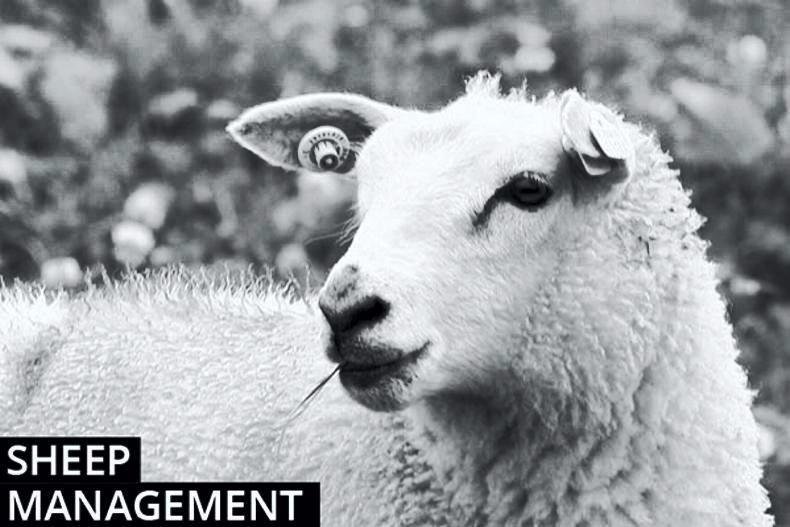Lamb drafting patterns are running behind target on many farms and putting pressure on ewe lambs reaching weight targets at breeding.
Failing to achieve these targets has potential knock-on consequences on breeding performance and can have longer-term effects on lifetime performance if animals fail to make up any weight deficit.

The recommendation is for ewe lambs to weigh at least 60% of their mature weight at breeding. This is the equivalent of 48kg for large-framed ewe breeds with a mature weight of 80kg, 45kg for a mature weight of 75kg and 42kg for a mature weight of 70kg.
Exceeding this weight target is advisable, where possible, as it will reduce the pressure on animals further down the line.
Research in Teagasc Athenry has also shown that it will increase the chances of a yearling hogget rearing a lamb.
Where animals are falling behind target, steps will need to be taken to ensure performance picks up. Lambs on good-quality grass will gain in the region of 150g daily during September or 1kg to 1.1kg per week.
This level of performance will come under pressure in the absence of good-quality grass or in periods of poor utilisation.
Strategic use of meal feeding may be required with the best response achieved where lambs are supplemented with 300g to 600g, with the higher level offered where grass quality or volume is lacking.
Ewe condition: It is also important to ensure that lowland ewes are on the right track to hit a body condition score of at least 3.5 at mating.
Ewes on a maintenance diet should be handled to ensure that animals have not lost condition, while ewes receiving preferential treatment should also be monitored with ewes switched between groups where necessary.
It will take ewes eight to 10 weeks on good-quality grass to gain one condition score so it is important to stay on top of the job.

It is also important not to forget about rams. Any lameness issues should be addressed well in advance of the breeding season with regular foot-bathing carried out. If rams are lacking condition, feeding a small level of meal in the weeks leading up to breeding will improve matters. The target body condition is 3.5 to 4.
Read More
Lamb quotes pulled by 10c/kg to 20c/kg
Irish border won't be a precedent for rest of EU-UK discussions
Lamb drafting patterns are running behind target on many farms and putting pressure on ewe lambs reaching weight targets at breeding.
Failing to achieve these targets has potential knock-on consequences on breeding performance and can have longer-term effects on lifetime performance if animals fail to make up any weight deficit.

The recommendation is for ewe lambs to weigh at least 60% of their mature weight at breeding. This is the equivalent of 48kg for large-framed ewe breeds with a mature weight of 80kg, 45kg for a mature weight of 75kg and 42kg for a mature weight of 70kg.
Exceeding this weight target is advisable, where possible, as it will reduce the pressure on animals further down the line.
Research in Teagasc Athenry has also shown that it will increase the chances of a yearling hogget rearing a lamb.
Where animals are falling behind target, steps will need to be taken to ensure performance picks up. Lambs on good-quality grass will gain in the region of 150g daily during September or 1kg to 1.1kg per week.
This level of performance will come under pressure in the absence of good-quality grass or in periods of poor utilisation.
Strategic use of meal feeding may be required with the best response achieved where lambs are supplemented with 300g to 600g, with the higher level offered where grass quality or volume is lacking.
Ewe condition: It is also important to ensure that lowland ewes are on the right track to hit a body condition score of at least 3.5 at mating.
Ewes on a maintenance diet should be handled to ensure that animals have not lost condition, while ewes receiving preferential treatment should also be monitored with ewes switched between groups where necessary.
It will take ewes eight to 10 weeks on good-quality grass to gain one condition score so it is important to stay on top of the job.

It is also important not to forget about rams. Any lameness issues should be addressed well in advance of the breeding season with regular foot-bathing carried out. If rams are lacking condition, feeding a small level of meal in the weeks leading up to breeding will improve matters. The target body condition is 3.5 to 4.
Read More
Lamb quotes pulled by 10c/kg to 20c/kg
Irish border won't be a precedent for rest of EU-UK discussions









SHARING OPTIONS